Matador Network's Blog, page 798
August 25, 2020
Election Day asteroid heading for us

If an asteroid crashed into Earth tomorrow, at least we’d be spared the stress of election season. But as it turns out, 2020 won’t let us off that easily as an asteroid is slated to pass dangerously close to Earth on the day before Election Day in the United States — though its chances of hitting our planet are extremely low.
The Center for Near Earth Objects Studies at NASA’s Jet Propulsion Laboratory projects that asteroid 2018VP1 will come extremely close to Earth on November 2. The data shows that the asteroid’s chances of hitting Earth are just 0.41%, and NASA believes that it will likely miss us entirely. Even if there was a chance of impact, due to the asteroid’s small size, it would disintegrate.
In a statement, NASA said, “Asteroid 2018VP1 is very small, approximately 6.5 feet, and poses no threat to Earth. If it were to enter our planet’s atmosphere, it would disintegrate due to its extremely small size. NASA has been directed by Congress to discover 90% of the near-Earth asteroids larger than 140 meters (459 feet) in size and reports on asteroids of any size.”
So yes, you’ll still be able to vote on Election Day, though depending on the results of the election you may wish the asteroid had hit us after all. 
More like thisGalleriesThese images from NASA will rock your world
The post An asteroid is heading for Earth the day before Election Day appeared first on Matador Network.

August 24, 2020
Maskless crowds in Santorini

When a country finally reopens for tourism, we like to think tourists are behaving responsibly and that it’s reasonably safe to visit. That unfortunately doesn’t seem to be the case on Santorini.
Crowds in popular tourist destinations like Santorini are always frustrating, but that’s especially true now that crowds can lead to a COVID-19 outbreak. In a video shared on Instagram, influencer Katie Gorgadze shows just how questionable the tourism situation is on Santorini at the moment, with throngs of maskless visitors clustering together around a viewpoint.
Voir cette publication sur InstagramUne publication partagée par KATIE GIORGADZE (@katie.one) le 13 Août 2020 à 10 :59 PDT
Although at first it appears Katie and her husband are alone at the viewpoint, the camera pans to reveal the dense crowds of people standing around the overlook, and definitely not wearing masks.
In the caption, Giordaze wrote, “We went to watch the famous Santorini sunset. This is the behind the scene that most of the influencers didn’t show you!”
Noting that the island’s tourism is still down 50 percent compared to its usual numbers, she told Insider, “I must say, I was very shocked by the number of people at the location. If it wasn’t busy for locals, I can hardly imagine how busy it was in previous years…Not a lot of travelers were wearing masks.”
Despite the crowds, Giordaze did claim to feel safe throughout her stay in Greece. “The staff everywhere always wore masks,” she said, “and took all the necessary precautions all the time.”
Greece opened its borders to European tourists on July 1 but announced new restrictions this week after a surge in COVID-19 cases. The new measures include a ban on restaurants and nightclubs from operating past midnight and a cap of 50 people at public gatherings. 
More like thisBeaches + Islands10 beautiful Greek islands that aren’t Santorini or Mykonos
The post Instagram video shows crowds of maskless tourists in Santorini appeared first on Matador Network.

How climate change impacts chocolate
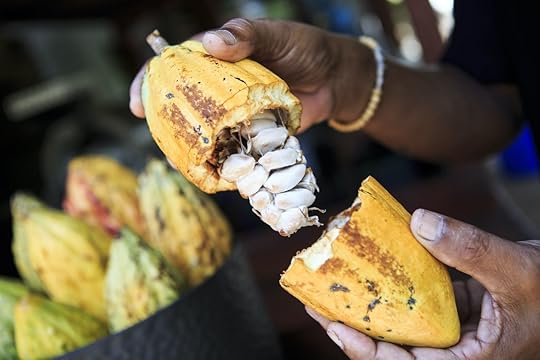
If there is one undeniable truth, it’s that humans around the world love chocolate. But like so many of the foods people love and consume on a regular basis, chocolate as we know it is threatened by climate change. That could mean price hikes in the short term or completely new chocolate regions in the long term. While it’s not fully understood what the future holds, one thing is clear: The chocolate in our candy, cakes, and confections — and, more importantly, the people who make it — will face a series of climate-related challenges in the near future.
Chocolate is made from cocoa, which are the dried and fermented seeds from the cacao tree. The trees are finicky and mostly grow in a humid 20-degree band to the north and south of the equator. This means nearly all cocoa beans come from a relatively small number of countries. Farmers in Ghana, Côte d’Ivoire, and other countries in West Africa grow around 70 percent of the world’s cacao. Central and South America, where the cacao plant originates, is home to important growing regions in Brazil, Ecuador, Mexico, and Peru. Cacao is also grown in Indonesia.
All of these places are susceptible to the ravages of climate change. One study found that, while climate change’s impact is global, tropical equatorial regions with little yearly temperature variability will be hit the quickest and the hardest. A 2011 report from the International Center for Tropical Agriculture predicted that cacao suitability in West Africa could start to decline as soon as 2030. Scientists are still figuring out what that means for where commercial cacao trees will grow as temperatures rise.
A shifting climate sweet spot
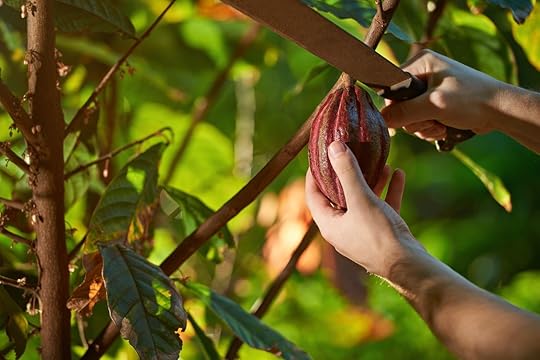
Photo: PixieMe/Shutterstock
ClimateAi, a company focused on improving climate resilience in agriculture, uses data sets and artificial intelligence-based forecasting technology to help agriculture businesses plan ahead. Using its tools and agricultural surveys from the Food and Agriculture Organization, it mapped the current and future climate in cacao growing regions for Matador Network.
In ClimateAi’s forecast, the annual temperature and precipitation where there are the highest yielding acres are the climate sweet spot (dark blue on the graph). It then plotted the future temperature and precipitation in 30 years for Côte d’Ivoire, Ghana, Cameroon, Nigeria, Ecuador, Indonesia, and Brazil. In some locations, higher precipitation pushes them away or toward the cacao growing sweet spot, while higher temperatures will have a bigger impact on others.

Photo: ClimateAi
“Ghana’s climate is shifting from basically the center of the high yielding acres to the fringe,” says Anthony Atlas, head of product and growth at ClimateAi. “And while a two-degree increase in average temperature might not sound like a lot, it’s huge.”
The average temperature includes all months and both night and day. The summer months could be brutal. Summer days could pass the temperature threshold of cacao plants, and the likelihood of an extended heat wave will multiply, Atlas says. This could cause large amounts of the current cacao plants to dry out and die. It could also impact the surrounding foliage that can’t survive increased heat, which in turn would lead to soil erosion around the roots of cacao plants and make them more vulnerable to disease and pests.
On the other end of the spectrum, some cacao-growing countries could see a more favorable climate in the future. Nigeria and Brazil have the potential to become the sweet spot for high yielding farms. It’s not entirely a reason for celebration — when crop viability increases, the land devoted to those crops increases as well. Deforestation is one problem that could arise as farmers clear land for cacao plantations. Another problem that cacao regions could see is a lack of farming investment and education in places that hadn’t previously grown cacao. Rapid growth could force farmers who were working with other crops to transition quickly without the opportunity to learn the best climate mitigation practices or build out the necessary infrastructure.
ClimateAi also looked at another metric: places that aren’t particularly suited or noted for cacao today but that could have the ideal climate in 40 years due to an increase in temperature, rainfall, or both. This includes parts of northern Brazil and Guyana, as well as regions farther from the equator than cacao is typically grown today.

Photo: ClimateAi
The biggest climate challenge facing cacao growing regions isn’t the heat, it’s the amount of water available. The National Oceanic and Atmospheric Administration notes that increased evapotranspiration (the combination of evaporation from the soil and transpiration from plants) is what will most hurt cacao plants. That’s why the most impacted regions are where the temperature rises without an increase in rainfall. A study published by the Intergovernmental Panel on Climate Change found that West African cacao farms would need to move higher in elevation toward protected mountainous forests in order to find a suitable growing climate with enough rainfall. It also found that 90 percent of cacao producing locations could be less suitable by 2050. This won’t happen in a bubble. As land at higher elevations are subjected to deforestation, the wild plants and animals in the area — many of which are already vulnerable — will be further threatened as the ecosystem is disrupted.
Rain and people
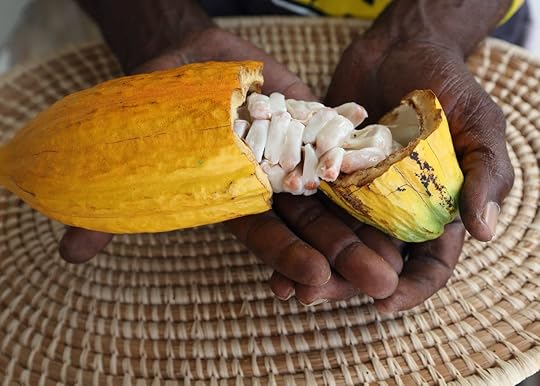
Photo: CKP1001/Shutterstock
Rainfall is only one way for a region to get enough water. Improved crops and agriculture techniques could help farmers.
“Public and private partners have joined together to work with farmers on various initiatives to support mixed agroforestry systems to help diversify farmer incomes and protect fragile soils,” says Bill Guyton, an agricultural economist who helped form the World Cocoa Foundation and who is the executive director of the Fine Chocolate Industry Association. “Research is underway for more drought resistant cocoa at research centers in different countries.”
Some researchers also see irrigation as a possible solution.
“The best way to prepare is to introduce irrigation, especially drip irrigation or micro-sprinklers for the dry period,” Eduardo Tugendhat, a supply chain expert with a focus on cocoa and palm oil and the director of thought leadership at Palladium, says. “This would also more than double yields, but the problem is that most farmers are extremely poor and cannot afford the technology. The other way of adopting has been to move into new jungle areas (e.g., national parks) and clearing new farms that are somewhat higher and wetter (at least initially).”
Unfair wages is a known problem in the chocolate supply chain — one that’s only been exacerbated by the global pandemic. It’s impossible to confront the climate change problem without first and foremost confronting the inequality between the large chocolate corporations and the people who are paid substandard wages for their crops. In the worst-case scenario, farmers and millions of children are forced to work cacao fields for less than $1 a day. Underpaid, and in some cases disenfranchised, workers don’t have the resources to farm sustainably.
“Without a living wage to feed their families, they are much more susceptible to climate change because they don’t have the capacity to plan long-term,” says Mel Bandler, a partnerships manager at Fair Trade USA. “Since the sharp price dips in 2017, farmers have been struggling overall to produce sustainably. If we take Ivory Coast (the world’s largest producer by tonnes of production) as an example, 80 to 90 percent of primary forest has been lost since the 1960s, 75 percent of which is due to agricultural (cocoa) expansion. Furthermore, there is not money to invest in new trees or agroforestry, so the overall ecosystem is very susceptible should there be sudden climatic shifts.”
Investing in education is one way to increase yields and improve the viability of farms for both people and the climate. Many farms practice monoculture, a farming method that directs all resources toward growing a single crop, which makes the economic and land viability problems worse. Other types of crops like cashews and rubber trees can be grown in the same regions as cacao plants, but those too are susceptible to climate change. Coffee grows in similar areas, but also faces just as much of an uphill battle as chocolate.
“The reality is that the cocoa supply system worldwide is not sustainable because it is built on farmers in extreme poverty,” Tugendhat says. “This cannot be addressed solely as a climate change problem. It requires systemic transformation that allows farmers to gain access to technology and the financing needed to expand and intensify their farms in climate-smart ways, and have the profitability to be able to pay back the financing.”
Empowering people at the start of the supply chain improves the final product for the workers, the consumers, and the environment. Adapting to the changing climate takes investment that’s not currently being put into the communities that grow cacao trees.
“Unfortunately, this comes at a cost that most companies and consumers aren’t willing to pay,” Bandler says. “It is important to vote with our dollars and support companies that are empowering cacao farmer’s well-being, and in turn we can mitigate climate change.” 
More like thisCoffee + TeaHow climate change will drastically change coffee as we know it
The post How climate change will alter chocolate as we know it appeared first on Matador Network.

Map of worst attraction in US
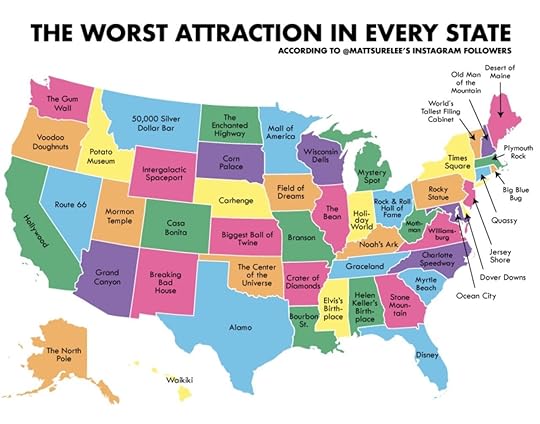
Usually, destinations try to promote their most popular attractions to bring in tourists. Since 2020 is upside down anyway, maybe they should start advertising their worst attractions. A map of the US, created by Matt Shirley and posted on Instagram, shows every state’s worst attraction, and it’s bound to generate some controversy. The method he used to create the chart isn’t exactly scientific. He polled his 389,000 Instagram followers and asked for their opinions on each state’s most skippable attraction. The results are pretty hilarious.
You’ll likely recognize most of the unfortunate “winners,” as they’re often touted as the state’s most famous site or landmark. Basically, they’re places you probably went on a field trip when you were in elementary school, if you happen to hail from that particular state, where you’re guaranteed to find crowds of other tourists.

Photo: Matt Shirtley/Instagram
Plymouth Rock took the top spot for Massachusetts, Times Square for New York, Colonial Williamsburg for Virginia, and the Alamo for Texas. Some attractions are barely attractions at all, like New Hampshire’s Old Man of the Mountain which crumbled several years ago. Much of the chart is likely to spark outrage, as Disney World, Graceland, Hollywood, and Waikiki all made the list. Many Twitter users have been responding to the graphic defending their state’s “worst” attraction, particularly some angry people from New Jersey coming yet again to the defense of the oft-maligned Jersey Shore.
And some of the results are simply indefensible. Fine, the Biggest Ball of Twine might be overrated, but the Grand Canyon? Thousands of tourists show up there for a reason. 
More like thisTrip PlanningThese 7 US cities are over. Here’s where to go instead.
The post The worst attraction in every US state, according to Instagram appeared first on Matador Network.

Glamping resort opening near Acadia

Camping is one of the safest activities you can do this summer, and glamping just adds a nice layer of luxury to the experience.
A new glamping resort just opened on Mount Desert Island, ME, and it’s perfect for a socially distanced vacation. The Terramor Outdoor Resort, operated by Kampgrounds of America (KOA), is a 60-acre property located less than five miles from Acadia National Park and features 64 canvas tents, a lodge with a restaurant and bar, and lounge areas for guests to relax. While luxury and comfort are certainly centerstage — the tents have electricity and Wi-Fi — the resort also immerses guests in nature and provides a true outdoor experience.
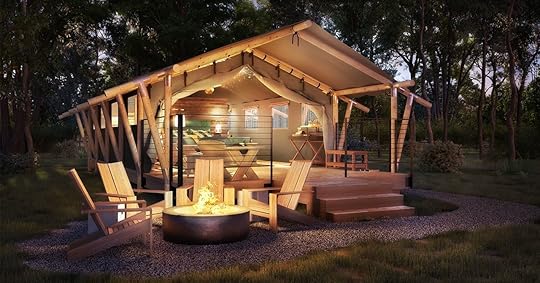
Photo: Terramor Outdoor Resort/Facebook
The tents include a king-size bed, robes, slippers, towels, and lanterns. Families and groups of friends can even take advantage of the four-person, two-bedroom tents. Each tent also has a private fire pit and outdoor shower.
When you’re not enjoying the comforts of your tent, you can participate in outdoor yoga classes, fireside live music, cooking demonstrations, hiking, biking, fishing, bird-watching, kayaking, and stargazing lectures.

Photo: Terramor Outdoor Resort/Facebook
Whitney Scott, vice president of marketing for KOA, told Lonely Planet, “The resort was naturally designed to allow for social distancing. Our tents are spaced and are ample both inside and out, with enough space apart from each other to offer their own private fire pits and outdoor seating. This allows guests to connect with one another and immerse themselves in New England’s beautiful landscape.” 
More like thisCampingGlamping experiences around the US for campers who hate roughing it
The post A new luxury glamping resort is opening near Acadia National Park appeared first on Matador Network.

Thailand plans to welcome foreigners

While popular South Asian destinations like Bali are shutting the door on international tourism until 2021, Thailand may represent some hope. The country is hoping to allow foreign tourists to enter the country in October, through a program called “Safe and Sealed,” which will allow tourism in designated areas.
According to Thailand’s Minister of Tourism Phiphat Ratchakitprakarn, “I have asked the prime minister for approval to set October 1 as the date to allow (inbound) tourists to enter. I also have requested to use Phuket as a pilot model … and have received approval from the Center for Economic Situation Administration.”
In the program’s early stages, tourists will be allowed to fly into Phuket, and must quarantine for 14 days. Resorts would be set up on the island’s beaches, allowing tourists to both quarantine as well as enjoy a safe, socially distanced vacation. Travelers would be required to take a COVID-19 test at the beginning and end of their quarantine period, after which time they would be free to travel throughout the rest of the island.
Additionally, hotel staff will not be allowed to leave these designated zones and will be tested regularly.
Travelers who wish to leave Phuket will need to quarantine for an additional seven days and take a third COVID-19 test.
Local residents still need to approve this plan before the country reopens to international visitors. 
More like thisTravelThe best place to go in Thailand for every type of traveler
The post Thailand makes unusual plan to welcome international tourists in October appeared first on Matador Network.

Bali closed to foreign tourists

Bali raised tourists’ hopes by announcing its planned reopening for September 11, 2020, but the popular island has since re-evaluated. As the number of COVID-19 cases are increasing in Indonesia, Bali decided to remain closed to international visitors for the remainder of 2020.
Wayan Koster, the governor of Bali, said in a statement, “The Indonesian government couldn’t reopen its doors to foreign travelers until the end of 2020 as we remain a red zone. The situation is not conducive to allowing foreign tourists to come to Indonesia, including to Bali.”
While closed to international tourists, Bali has been open to local travelers since the end of July, and an estimated 2,300 to 2,500 tourists came onto the island each day from July 31st to August 14, Reuters reports.
International tourism in Bali has been interrupted since April. 
More like thisBeaches + IslandsThese islands near Bali are still uncrowded slices of paradise
The post Bali reverses course and will remain closed to foreign tourists until 2021 appeared first on Matador Network.

National parks are free on August 25

In celebration of the National Park Service’s 104th birthday and to encourage people to get outside and visit America’s beautiful national parks, the National Park Service is waiving entrance fees to all parks on August 25.
In a press release, the NPS said, “On August 25, 1916, President Woodrow Wilson signed the legislation establishing the National Park Service. At the same time, women across the country were fighting to guarantee their right to vote throughout the United States, a right that would finally be recognized when the 19th Amendment became part of the US Constitution on August 26, 1920, the day after the fourth birthday of the National Park Service.”
The NPS has granted free entry days to celebrate its birthday in the past, though this year will look a little different. Due to COVID-19, many major facilities in the parks may be closed, camping may be restricted, and getting a reservation could prove difficult. The NPS also recommends that people wear face coverings inside the parks, especially in highly populated areas. The NPS recommends that everyone check the park website to determine its operating status before visiting.
If you happen to miss this particular free entrance day, there’s two more coming up this year. The next is on September 26 in celebration of National Public Lands Day, and there’s another on November 11 for Veterans Day. 
More like thisParks + WildernessThe best uncrowded state parks near the five busiest national parks
The post All US national parks will be free on August 25 appeared first on Matador Network.

Sark Island is looking for residents

Moving to a remote island is a pretty tantalizing prospect right now. Luckily, the small island of Sark, one of the Channel Islands between England and France, is looking for new residents.
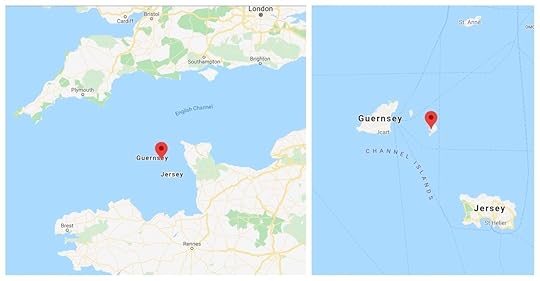
Photo: Google Maps
The island has fewer than 500 permanent residents, no cars, and the only transportation is bicycle or horse-drawn carriage. Now, German entrepreneur Swen Lorenz, who has lived on the island since 2004, is trying to boost the island’s population by persuading people to move there.
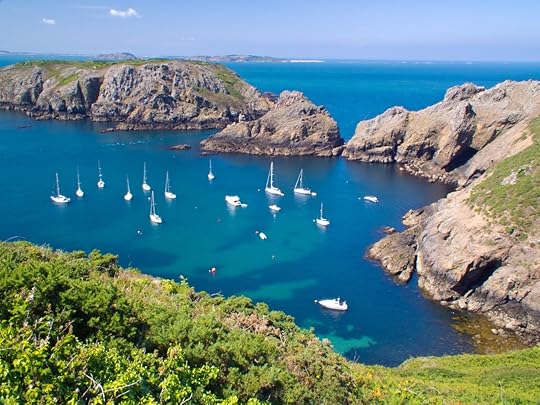
Photo: Keri Billen Photography/Shutterstock
On the Sark Society website, Swen Lorenz invites people to “Live in a place with stunning scenery and a low-density population, pay minimal taxes, and free yourself from excessive government regulation, and be part of a group of like-minded entrepreneurs, investors, and freethinkers.”

Photo: Allard One/Shutterstock
Lorenz outlines how easy it is to move to the island, citing the lack of employment law, no income or personal asset disclosure, no income tax, and no accounting requirements. Citizens of the UK and Ireland can move there without a visa, while US and EU citizens must apply for an employment, investor, or entrepreneur visa — all of which are relatively easy to obtain.
Sark is a “dependency” island with some level of autonomy, though still under the jurisdiction of the UK. There is no airport, and the island is only accessible by boat from the nearby islands of Guernsey and Jersey, and from France. 
More like thisBeaches + Islands7 surreal car-free islands in the US
The post This idyllic island in the English Channel is looking for new residents appeared first on Matador Network.

Best Airbnbs on Kauai, Hawaii
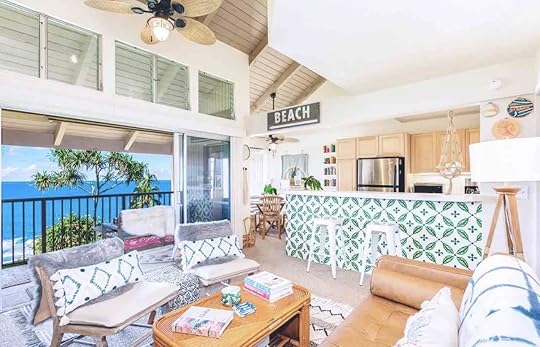
Like it or not, 2020 is the year of domestic travel. While we wait impatiently for international travel to return, our attention turns inward as we consider adventures within our own borders. Road trips are more popular than ever, but they’re not for everyone. Many of us want nothing more than to arrive at a beachside resort or tropical cabin, throw on some shades and tune out the world for a while. This might seem incongruous with a domestic trip right now, but you’re forgetting one important destination: Hawaii. Come September, United States citizens can escape to paradise without ever leaving the country. As long as you meet the testing requirements, nothing is stopping you from enjoying a sunny, quarantine-free island vacation next month. There’s really only one question left to answer. Where to stay?
Kauai, the oldest of the Hawaiian islands, is covered in rainforests, white beaches, state parks, waterfalls, and other natural wonders. You might think that a lengthy stay would drain your bank account, but that’s actually not the case. These Airbnbs on Kauai are not only breathtaking but also surprisingly affordable. From a cabin in the mountains to oceanfront villas, these are the best Airbnbs on Kauai.
1. Modern villa, Koloa
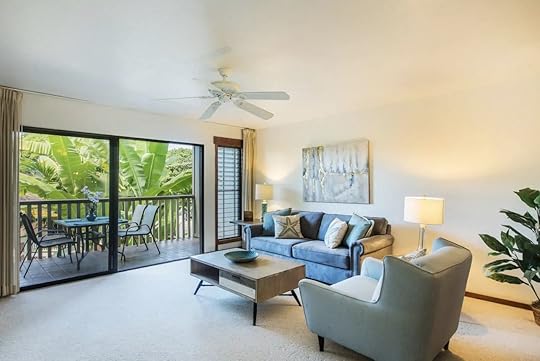
Photo: Airbnb
Located in a resort community in Koloa, this modern villa is surrounded by tropical gardens and some of the island’s best beaches. As a guest of the resort you have access to the property’s two pools, and you’ll be within walking distance of restaurants and shops. Just across the street you’ll find Koloa Landing, a favorite spot for diving and snorkeling, and the Sheraton, Lawai, Kiahuna, Poipu, and Brennecke beaches all within striking distance.
Price: $109 per night
2. Cedar Cabins, Kokee Park
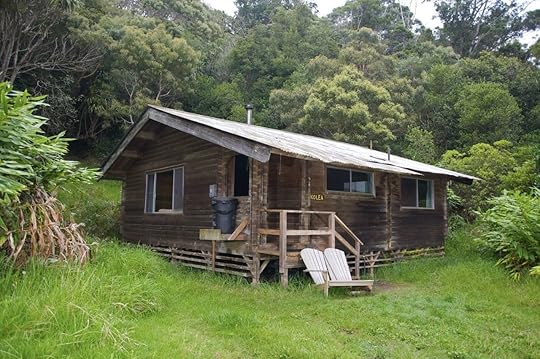
Photo: Airbnb
The Cedar Cabins might be the most unique accommodation in Kauai. If you really want to get out of the busy resort atmosphere and plunge into the island’s rustic side, these cabins in Kokee Park are the ideal choice. Located 3,000 feet up in the mountains, the cabins are within walking distance to some of the park’s best hiking trails and give you the perfect base for exploring Waimea Canyon. Since it can get chilly at that elevation, don’t be surprised if you find yourself building a fire to stay warm at night.
Price: $120 per night
3. Sunny condo, Poipu Beach

Photo: Airbnb
Within walking distance to snorkeling and surfing on Poipu Beach, this one-bedroom condo is also close to the area’s restaurants, shopping centers, and even a golf course. The prime, central location of this sunny condo, combined with its tropical decor, make it the perfect couples getaway on Kauai.
Price: $159 per night
4. Makai Golf Club cottage, Makai Resort

Photo: Airbnb
On the north shore of Kauai, the Makai Golf Club cottage is ideal for those who want to use their tropical getaway to improve their golf game. The two-bedroom accommodation is right next to the Makai Golf Club — and several beaches — giving you easy access to a relaxing round of 18 surrounded by some of the island’s most stunning scenery. As a guest of the cottage, you’ll also have access to a pool, hot tub, fire pit, bike rentals, and BBQ grills.
Price: $161 per night
5. Two-bedroom townhouse with putting green, Poipu Beach
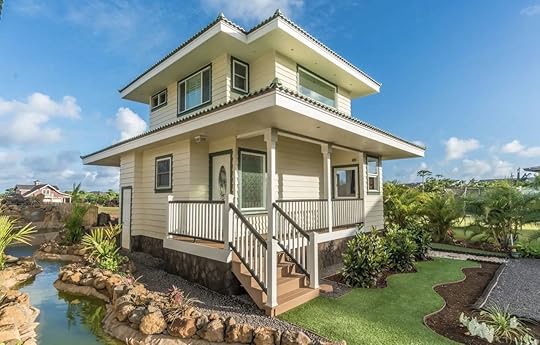
Photo: Airbnb
Staying in Poipu gives you the best of both worlds: the beach and mountain views. This one-bedroom townhouse sweetens the deal by giving you access to your own putting green and is just five minutes away from the Kiahuna golf course. In addition to the putting green, the property also has a custom waterfall and creek to really make you feel immersed in Hawaii’s natural beauty. If you do eventually get bored of hanging out at the house, Poipu Beach is known for its diving, snorkeling, and surfing, as well as opportunities for viewing monk seals.
Price: $199 per night
6. The Surf Shack, Princeville

Photo: Airbnb
The Surf Shack in Princeville certainly lives up to its name. This two-bedroom house is defined by aesthetic touches like vintage tiki shot glasses, a curated newspaper filled with local pictures, surfboards hanging from the wall, and other homey beach house decor. The place even has its own Instagram page. Guests can even stroll down a paved trail to a private Hideaways beach, where there’s a swimming pool and hot tub.
Price: $199 per night
7. Garden Isle Oasis, Wyllie Beach
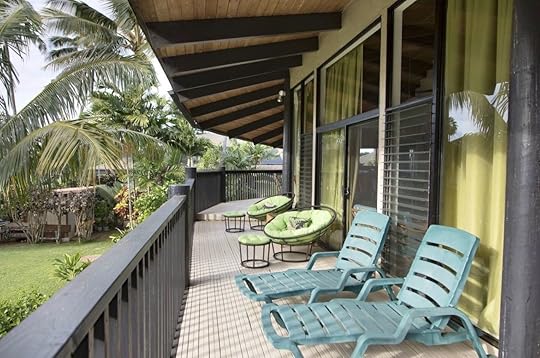
Photo: Airbnb
This place doesn’t take the name “oasis” lightly. The two-bedroom garden apartment has wicker furnishings, tropical turquoise walls, and a wrap-around veranda with both sunrise and sunset views. Floor-to-ceiling windows allow for tons of natural light and a view of the lush gardens surrounding the complex. Located in the north of the island, it also includes a pool and is close to several hiking trails and popular kayaking spots like Hanalei Bay.
Price: $250 per night
8. Romantic Garden Cottage, Wainiha River
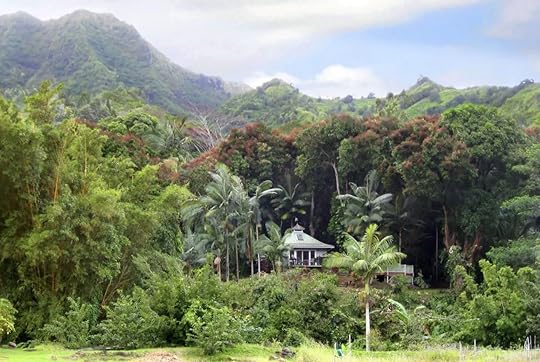
Photo: Airbnb
On a secluded acre of land along the Wainiha River, this garden cottage offers stunning views of the river valley and a private pool and spa. The property is defined by its garden filled with exotic birds, flowers, and fruit trees growing papayas and bananas, and leads down to a private stream where you can go swimming. It’s also just two miles away from some of the island’s most beautiful beaches on the north shore. If you’re looking for a restorative getaway surrounded by nature, it doesn’t get any better than this.
Price: $275 per night
9. Oceanfront condo, Kauai Shores

Photo: Airbnb
This private one-bedroom condo on the east coast of Kauai has one of the most unobstructed views of the ocean anyone could hope for. From the veranda, you’ll have a front-row seat to watch the sea turtles and whales playing in the water. Just steps away from Lawai Beach, the condo is furnished with floor-to-ceiling patio doors that ensure you always have a view. It’s also just a five-minute drive from the National Tropical Botanical Gardens and Spouting Horn Park, where you can take a break from the beach to hike through the native greenery.
Price: $290 per night 
More like thisBeaches + IslandsWhy Kauai is the most underrated island in Hawaii
The post 9 stunning yet affordable Airbnbs on Kauai, Hawaii appeared first on Matador Network.

Matador Network's Blog
- Matador Network's profile
- 6 followers



